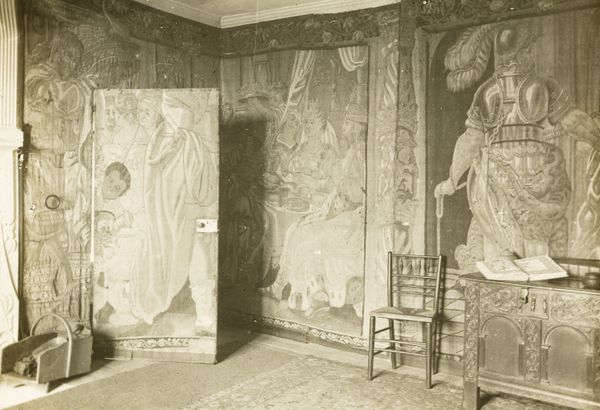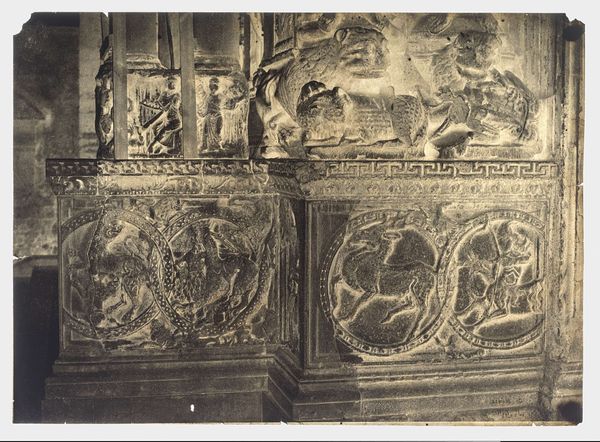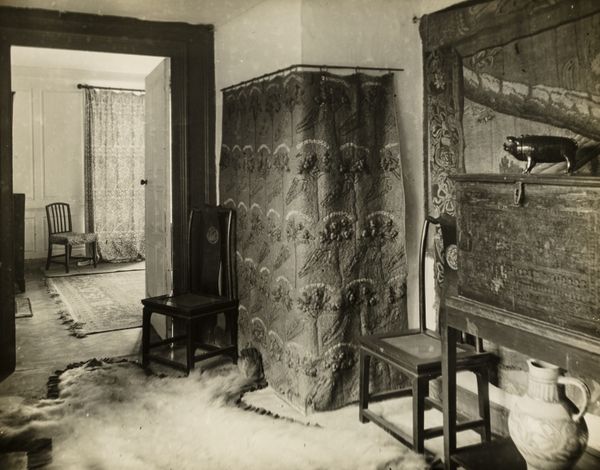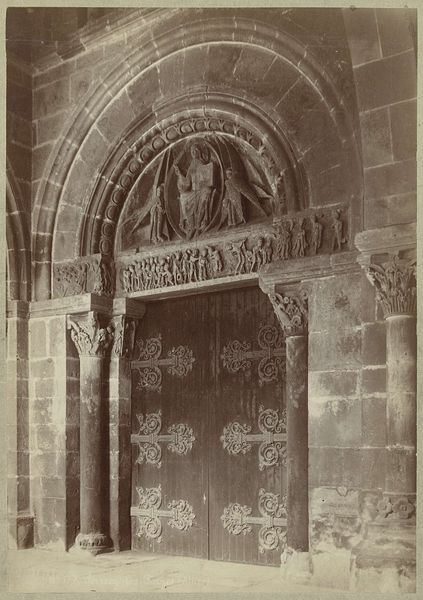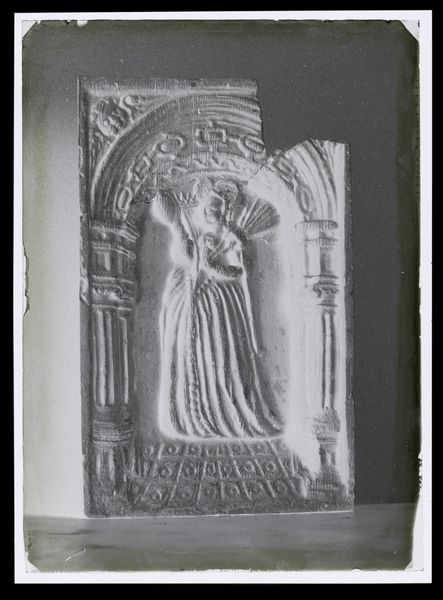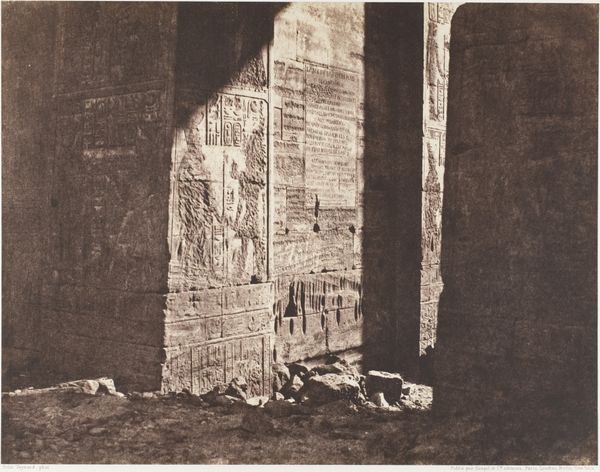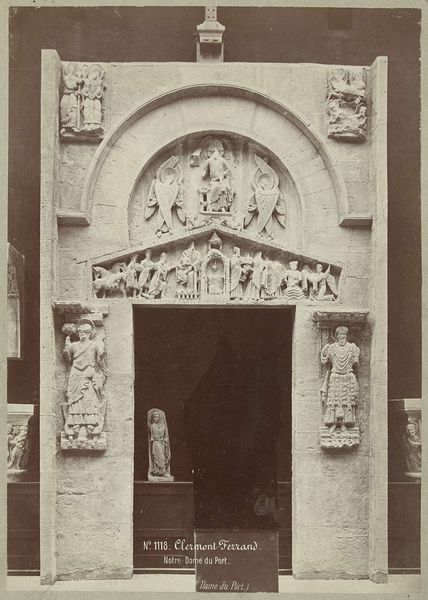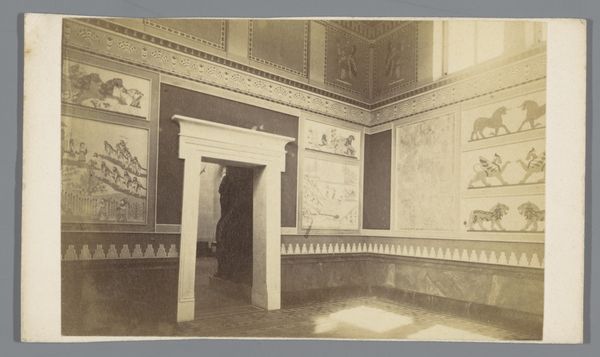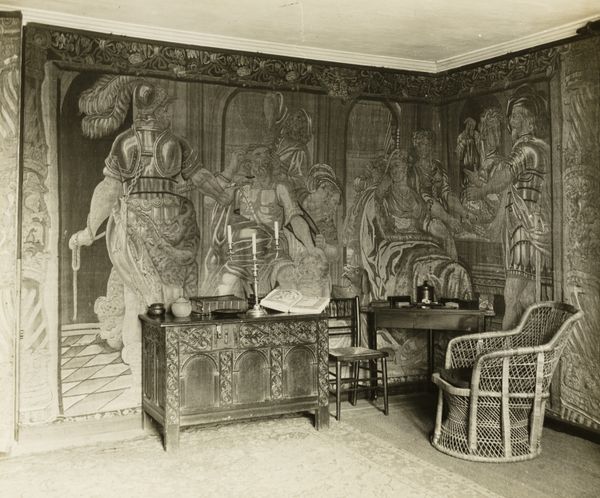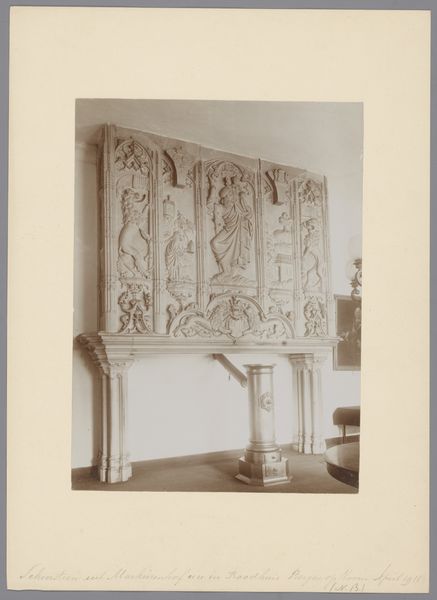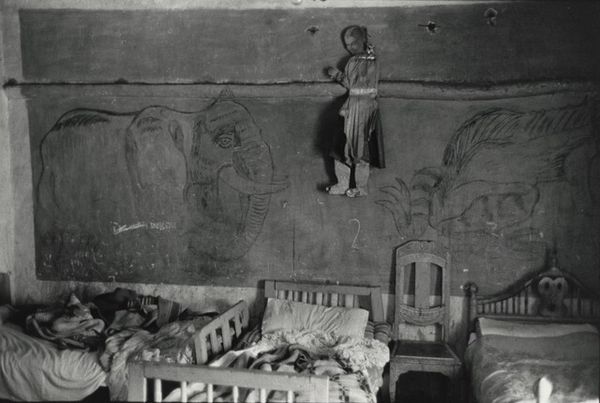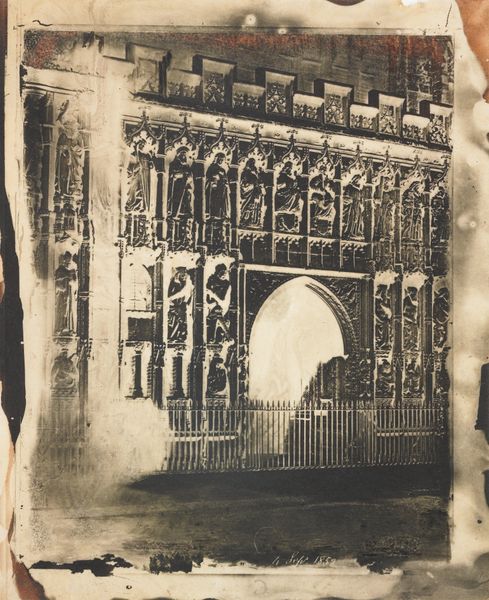
photography, wood
#
16_19th-century
#
pictorialism
#
historic architecture
#
photography
#
england
#
wood
#
history-painting
#
decorative-art
Dimensions: 8.2 × 8.2 cm
Copyright: Public Domain
Curator: Frederick H. Evans’s 1896 photograph, “Kelmscott Manor: In the Tapestry Room,” captures a detail within the historic English estate once inhabited by William Morris, situating us firmly within a nexus of artistic and social ideals. Editor: The subdued lighting and detailed textures evoke a hushed, almost reverential atmosphere, reminiscent of the pre-Raphaelite aesthetic. The wood paneling and aged tapestry seem to exude a certain melancholy. Curator: Yes, melancholy is fitting. Evans's photographic style, influenced by Pictorialism, presents this interior as more than mere documentation. It’s a constructed vision, aligned with Morris’s romantic medievalism and yearning for an imagined past free from industrial alienation. Editor: We're drawn immediately to the hand-crafted textures. Notice how the worn quality of the tapestry contrasts with the carefully carved wood paneling, highlighting a clear dialogue between the labor involved in creating the materials and the representation displayed in them. Curator: Absolutely. Consider how the tapestry functions. It isn’t just a decorative element; it presents a narrative, likely steeped in medieval lore, while the figures depicted almost appear as reflections on the social roles within Morris’s artistic circle. The inclusion of this type of imagery underscores a very deliberate statement about craftsmanship and its value, particularly in an age of rapid industrial expansion. Editor: I think you’re right. Looking at the texture of the wood also—that is the result of human labor. There's something incredibly compelling about how the material processes are embedded in this visual documentation of domestic space. You see both aesthetic consumption and the means to achieve this reflected on the material. Curator: Precisely. And it leads us to contemplate not only Morris's vision for art's role in society but also Evans's own perspective, filtering this vision through his artistic lens. The image becomes a cultural artifact representing a longing for a unified and artisanal mode of production, reflecting concerns about labor, artistry, and class dynamics of late Victorian society. Editor: The details we can notice because this image has preserved it speak volumes about what they wanted to highlight and its effect. It goes beyond nostalgia and into what labor practices inform beauty. Curator: A fitting intersection to conclude on, indeed. It certainly emphasizes that there’s still much to discover between art history, its tangible expressions, and our contemporary critical consciousness.
Comments
No comments
Be the first to comment and join the conversation on the ultimate creative platform.
